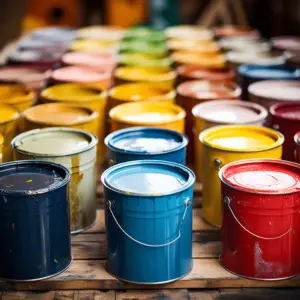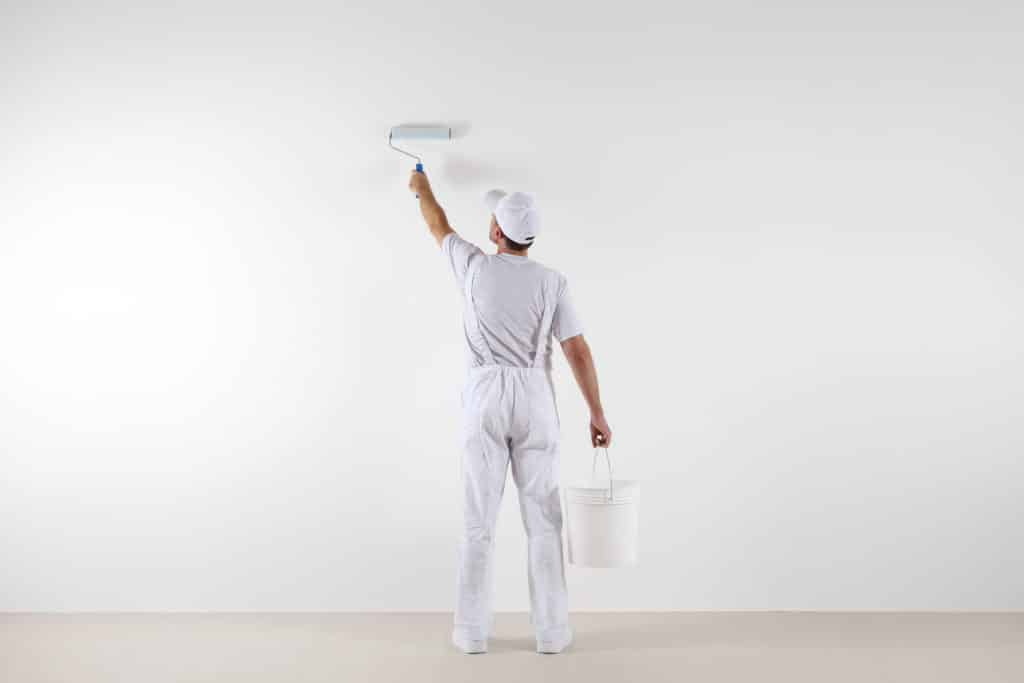Our market has several paint varieties, making it difficult to choose the right one. So do your study before buying paint.
Maintenance and regular paint are sometimes mistaken. Maintenance paints preserve industrial structures and components. This is industrial maintenance paint. Maintenance paint is chosen for its protective rather than cosmetic features.
High-performance epoxy, enamel, acrylic primers, and finishes make maintenance paint.
On the other hand, regular paint is paint that is used primarily for its aesthetic qualities. Although this paint has protective properties, this is not the primary purpose for its use.
Table of Contents
What is the Importance of Using High-Quality Paint

When it comes to painting homes, most people choose to go for low-quality paint. There are various advantages to choosing high-quality paints that everyone should think about. Below are some of the advantages of using high-quality paint that you shouldn’t ignore:
Enhanced adhesion
In contrast to low-quality paints, high-quality paints use fine 100 percent acrylic latex. The stronger the resin, the easier it is to attach to the painting surface. High-quality paints can last for years, if not decades; this is one of the advantages that you will undoubtedly appreciate as time passes. Low-quality paints do not adhere well, and you may need to repaint after a short time.
Appearance
One of the many advantages of high-quality paint should be its appearance. Paints of higher quality have a better appearance than paints of lower quality. This is because it is easier to spread high-quality paint evenly across a surface because of its thicker and smoother consistency and brush marks are less prone to appear after applying the paint.
Maintenance
Maintaining high-quality paints is a simple task. It does not collect dirt or grime, making cleaning this surface a breeze.
If there are stubborn handprints or dirt stains on the wall, it is best to use a cloth rather than a brush to avoid marring the paint.
Touch-ups with high-quality paint can be used to restore fading paint. It will look as good as new with the smooth application.
Less Effort
Applying high-quality paint to a wall requires a lot less time and work. It performs better than low-quality paint with fewer coats. So you won’t have to waste any more time or money on a proper paint job.
Block Resistance
When applying low-quality paint to doors or windows, they stick to the frames. High-quality paints, on the other hand, are more resistant to block. They rarely cause sticking. As a result, you can use them on almost any surface.
Mold Resistance
Mold thrives in wet environments in our homes. The quality of paint plays a vital role in preventing its spread. High-quality paint improves the appearance of your home and helps to prevent mold growth, but it also helps maintain the structural integrity of your home.
Less Spatter
Paint that is of higher quality is thicker and easier to apply. Paint specks are also prevented from flowing away due to the thickness. High-quality paint thus makes less of a mess and requires less effort throughout the painting process.
What Should You Look for When Choosing High-Quality Paints?
Since all paint cans appear alike, it’s becoming harder to discern high-quality from low-quality paint. On the label, look for volume of solids and titanium dioxide.
Pigments and binders should be utilized more. The more solids, the better the paint. Titanium dioxide should be 20-25% to cover surfaces evenly and with fewer treatments.
What are the Differences Between Oil-Based Paints and Water-Based Paints?

There are two main types of paints available: oil-based and water-based paint. Both are safe to use in your residential home. But what are the differences between these two types of paints? Why choose one over the other? Below are some of the differences between oil-based paint and water-based paint:
Cost
Although both oil-based and water-based paints can be pricey, oil-based paint is often less expensive than water-based paint. Natural oil (typically linseed oil) or synthetic oil (alkyd) can be found in oil-based paints.
Alkyd is found in the cheapest oil-based paints. This is usually because synthetic oils are more environmentally sensitive and thus more difficult to employ in manufacturing.
Furthermore, the market demand for oil-based paints is smaller than for water-based paints. As a result, oil-based paints are typically less expensive than water-based paints.
Durability
When employed by residential interior painting services, oil-based paints are frequently more durable than water-based. Oil-based paints have a hard finish. This means they’re excellent for use on baseboards, shelves, and other areas where wear and abrasion are likely.
When abraded, water-based paints, on the other hand, are prone to rubbing off. They are frequently better ideal for low or no traffic areas like ceilings and walls when used for domestic interior painting.
Interestingly, home exterior painting becomes less durable. Water-based paints fade slower than oil-based ones. Oil-based paints dry durable. Thus, it protects outdoor surfaces from corrosion and wetness. They must be repainted regularly since the strong shell can fracture.
Odor
Oil-based paint releases VOCs when it dries. Most people identify paint with its unpleasant smell. Not just because of the smell, gases can be deadly if not properly ventilated. Thus, oil-based paints are used on baseboards rather than walls.


